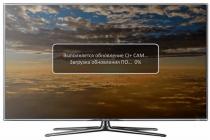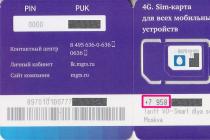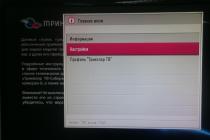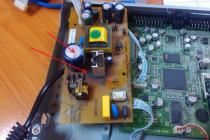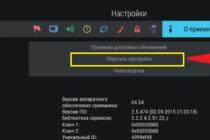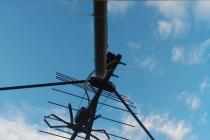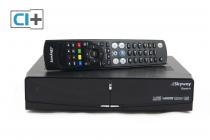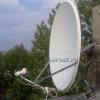Interference with satellite signals and methods of dealing with them
In recent years, the problem of radio frequency interference has increased markedly in the satellite broadcasting sector. It significantly reduces the profitability of satellite operators' business and creates problems for satellite monitoring and telecommunications.
Prerequisites
Experts attribute this to a number of factors. One of the main ones is a sharp increase in the number of V-SAT terminals, combined with a decrease in the cost of the equipment itself and its installation. According to Martin Coleman, executive director of the Satellite Interference Reduction Group (sIRG), the V-SAT system generates about 40% of all satellite interference and is responsible for half of satellite transmission failures.
In addition, the density of the placement of satellites in geostationary orbit has increased and the diameter of their transmitting antennas has decreased, as a result of which the beams have become more "blurred". And to top it off, the bandwidth required for many satellite services is growing.
The main problems are interfered with by sporadic broadcasts rather than regular broadcast services. The latter are easily detected and can be identified by the corresponding service data in DVB transport streams. But if the source of the interference is the V-SAT signal of the terminal installed on a remote oil rig, then the search for the source can take a lot of time.
One of the directions for resolving the issue is increased attention to the training of technical personnel who configure and maintain transmission systems.
At the same time, a set of technical measures is being implemented, moreover, traditional methods of detecting and localizing interference are no longer enough today, and preference is given to proactive measures.
One of the tendencies is to transfer the solution of the issue directly to the satellite. So, on the Eutelsat West B satellite, which has been broadcasting to North Africa and the Middle East since last year, an experimental function for suppressing interference with TV signals has been introduced. For this purpose, a frequency converter is installed on the satellite behind the receiving antenna, allowing Eutelsat to change the frequency of the uplink signal while keeping the downlink frequency unchanged.
In another example, a number of companies in the United States have adopted frequency hopping technology that can be used on both satellite and ground terminals. It uses a secret frequency hopping algorithm that the developers claim is optimized to resist interference.
Eliminate interference blindly
Kratos, which specializes in solutions for geolocation and monitoring of satellite signals, as well as detecting their interference, offers another solution. An algorithm that analyzes the state of the satellite signal detects interference, then a signal inverse to the interference is generated by software and hardware methods, and is added to the affected signal, compensating for the interference. The hardware-software approach provides real-time signal processing. The system can protect signals of any format, including TDMA and frequency hopping signals. The system guarantees suppression of interference by more than 25 dB, and today it is the only solution that can work with arbitrary network configurations (ellipses - ellipses). An even more important advantage of the method is the absence of the need to interact with the interfering party.
All this does not exclude the use of traditional measures providing for the identification of the source of interference - geolocation, exchange of data on sources of interference, etc. Moreover, a new signal source identification mechanism has recently appeared, regulated by the DVB-CID standard.
DVB CID
DVB-CID is a transport standard of the DVB consortium that defines how the satellite carrier identifier is transmitted. The standard describes the signaling protocol, channel coding and meta carrier modulation generated for the transmission of the identifier.
The minimum information transmitted on the methane carrier ID contains a globally unique identifier (GUI) DVB-CID set by the equipment manufacturer. Additionally, information entered by the operator can be transmitted there - in particular, the GPS coordinates of the transmitter, phone number, etc., which will speed up the process of eliminating interference.
The technology was developed to optimize the operation of satellite broadcasting systems DVB-S, DVB-S2 and DVB-DSNG, but it can be used in any other satellite system for regular broadcasting.
The technology uses differential spread spectrum BPSK modulation, differential coding, scrambling, and cascade error protection, including retransmissions, cyclic redundancy check (CRC) and Bose-Chaudhuri-Hocquenghem-BCH ). In the opinion of the developers, this combination will provide reliable transmission of the identifier despite the low power of the methane carrier. To meet the requirement of compatibility with existing modulators and satellite channels, the addition of a methane carrier should not increase either the signal strength or the bandwidth it occupies. Therefore, the power spectral density of the identifier signal is below the level of the main carrier, which can lead to a slight degradation of the signal-to-noise ratio of the main carrier signal (usually less than 0.1 dB). At the same time, the use of Spread Spectrum technology in combination with differential BPSK modulation and BCH FEC ensures stable transmission of the carrier ID. In most cases, this will allow you to identify the source of the interference without removing the signal and turning off the transmitting equipment, which is especially important for broadcast services. True, identifying the identifier of the interfering signal will require sufficiently accurate detection systems.
Sources of interference
Satellite interference can be caused by cross-polarization, signal interference from neighboring satellites, equipment breakdowns, and technical personnel errors. The occurrence of interference becomes more frequent as the density of satellites in geostationary orbit increases and it becomes more and more typical for spacing of adjacent positions by only 2 degrees.
Personnel errors include the wrong choice of frequency or broadcast time, incorrect antenna alignment. The antenna alignment may also be lost due to strong winds.
And, finally, up to 5% of interference is created as a result of pirate use of a satellite resource (without a contract with a satellite operator) or as a result of deliberate blocking of a satellite signal.
The source of the blocking, as a rule, can be localized, but it is often difficult to disable the blocking signal. It is precisely such targeted interference that creates the most serious difficulties for operators.
Catch the Firebird
Z I wanted to catch the HotBird satellite at the dacha near Mozhaisk. In general, what is so difficult, the more I saw how it is done. But I saw it in Libya, but here is a completely different matter. The most inconvenient thing is that no one has any plates in the vicinity and there is nothing to use as a guide.
R Results, or rather instructions on what to do in order to get budget satellite channels without involving a company that will set up and install everything.
1 ... We go to any electronic bazaar, where we buy a domestic plate Supral 90 cm, which costs only 750 rubles. with all the necessary fasteners (you can take 60, but you will be able to catch half of the channels on it and in bad weather conditions, even on those that have already been caught, square artifacts will appear.120 - already for an amateur, but it is not very much better than the one which is 90 cm). We buy a "head" (converter), cable and receiver. At the expense of the latter - you should not show off. We take the cheapest one, but so that you can upload codes into it (CI or Common Interface it is called. It can be useful to inject fresh codes for closed channels. Unfortunately, new signal coding systems like Viaccess2 still do not break and are unlikely to break in foreseeable future). But, the most important thing is that the receiver has a magic function that allows you to show the level and quality of the signal (Level and Quality). The red price for such a receiver is $ 120.
2 ... We ask the beavers on the market to catch the HotBird satellite on the purchased receiver and scan a dozen other channels from it (of course, you need to choose a tent for buying equipment, where you have your own dish installed and you can tune in to the required satellite).
3 ... In place. If there is no reference point, then you can use the Azimut program (300Kb), which was written by one kind person (site). Its meaning is as follows. We select a satellite, set the time zone, date, and enter the geographical coordinates of the place where the dish is installed (we take them from some gazetteer, from a map or from Google Earth. Advanced and modern can use their GPS receiver). The program will give out three times for the specified day when you can accurately aim at the satellite. In the morning, the line of sight from the right extreme point of the plate through the converter in the sun, in the afternoon through the upper extreme point of the plate and the converter in the sun, and in the evening through the left extreme point of the plate and the converter in the sun (we are in this case behind the plate and aim).
4 ... We connect and turn on everything. We select one of the channels tuned in the bazaar, turn on the function that shows the level and quality of the signal. Next, we begin to wiggle the plate up and down and left and right. The Supral saucer, aimed at the HotBird, hangs almost vertically, so there is no need to point it strongly up or into the ground. Special tenderness is not required for coarse tuning. As soon as the satellite was hooked, we tighten the fasteners of the meme and begin fine-tuning, achieving the maximum values of the signal level and quality. I got a max 88% level and a max 74% quality (the values may vary on different channels). Then we fix the plate and enjoy the presence of more than a thousand channels, with varying degrees of security of which a dozen are in Russian.

From checked:
- The signal does not pass through a double ordinary window glass. Although someone managed to receive, claiming that the signal does not pass only through new double-glazed windows.
- Sat Finder (a device for searching and tuning to a satellite) for 300-500 rubles. - useless thing. You should not spend money on it, but use the built-in function of the receiver, described above.
- Thunderclouds greatly impair the signal, so it is advisable to make the settings in clear, cloudless weather.
- Curtains and mosquito nets do not interfere with the signal.
D more about channels and my receiver -
Satellite TV is extremely relevant, it provides an opportunity to watch channels in high quality without compression, which attracts many people around the world. In search of the best companions, many have found Hotbird, but few know enough about it and its features.
First of all, it is worth knowing that the hotbird satellite television itself is focused more on the European market, since the French company owns the 13th satellite. Many lovers of Russian channels, tuning in to this satellite, are faced with the fact that there are quite a few channels in Russian there (I mean open ones).
Of course, there are much more paid ones, but for fans of free TV, this satellite will not be one of the best. However, if you are interested in foreign channels, as well as channels with Russian subtitles, then this is an option for you.
The main list of satellite-supported broadcasts includes channels from the following countries:
- France.
- Switzerland.
- China.
- Portugal.
- Poland.
- Italy.
- Germany.
- Turkey.
- etc.
It should be noted that there are also channels from other countries here, but there are fewer of them, since the main target audiences are located in the above countries, as well as broadcasting companies.
In addition, a sufficiently large coverage area makes the satellite more and more in demand in our time. While in Russia, you can watch many free foreign channels, and even Russian, but there will be only a few dozen of them.
Of course, the coverage area, although wide, has its limitations. For example, it is optimal to receive a signal from this satellite, being in the territory:
- Europe.
- Central Asia.
- China.
- North Africa.
- The Middle East.
Unfortunately, residents of other regions will not be able to receive the signal, since the coverage area is limited and has its own certain limits.
The advantages of this satellite
Among the main advantages of the Hotbird 13e are the following:
- List of more than half a thousand channels.
- Broadcasts in different languages originating from different countries of the world. Including Russian programs.
- Many channels in the public domain, for which you do not need to pay a monthly fee.
- The highest quality of modern digital broadcasting.
- Large and extensive coverage area that covers almost all regions of Russia.
- Possibility to subscribe to paid channels, which will provide even more opportunities for spending your leisure time watching TV.
All it takes to start taking advantage of all of these benefits is to set up a move with the Hotbird 13e. This is done quite simply, does not require any special knowledge and skills. You will also need special equipment capable of receiving and decoding channels. 
The satellite allows you to use an antenna with a diameter of 0.6 m to 0.9 m, which is very convenient, since such antennas are inexpensive, do not require much space for installation, they are easy to adjust and receive a signal perfectly.
Another important point. If you find yourself in an area that covers the coverage area, you will also need to make sure that there are no obstacles in the path between the antenna and the satellite.
In fact, even trivial tall buildings or trees can damage the signal, it will not reach you, and you will not be able to take advantage of satellite TV.
Call in advance a wizard who will test the connectivity before installing and configuring the hardware. So you can save yourself from unnecessary costs that will turn out to be in vain.
In case, if you do not enter the coverage area, you can always find other satellites to which you can connect to watch your favorite programs.
Usually, the setting takes place already depending on which satellite, channels and provider have been selected. The equipment that you will use also plays a significant role. It should not only meet quality standards, but it should also be compatible with your plate and your TV.
Installation subtleties
Often, if you order equipment from any company, the wizards install and configure themselves. The parameters of the terrain, coverage, as well as other subtleties that can play a role when connecting are taken into account.
The connection itself takes place in several stages:
| Stage | Description of work |
| Purchase of equipment | You order equipment (plate, receiver, cables, etc.), experts advise you which models are best to choose, depending on your goals. There can be a significant difference in antenna diameter, frequency range, sharing capabilities and other functions. For each item of the product, a thorough analysis is necessarily carried out in order to find the necessary set for you. |
| Equipment installation | Usually this stage begins with the departure of the master to your place of residence, where he makes the necessary measurements, draws up a connection and installation project. If this was done at the purchase stage, the wizard simply installs and connects all the items that were purchased earlier so that you can use them. |
| Equipment setup | Most of the problems for unknowing people arise with the tuning of the antenna to receive satellites, as well as with the settings of the receiver, which must decode the signals. Here you need to know all the frequencies of the channels, and the possibilities of connecting to a TV, the Internet, etc. It is best to entrust this stage to a professional, and not do it yourself, since unknowingly you can make a number of gross mistakes. |
| Package selection | In order to decode signals from paid channels, you need to connect to them. This is very expensive with each channel separately, which is why many providers offer channel packages that you can use. Usually they mainly concern regional programs that are published in Russian. But there are also many channels that support Russian subtitles. |
If you want to use free channels, you will need a list of them to tune into. Such lists can be found in a variety of sources. The most versatile is the lyngsat service. It contains a list of all channels, both open and closed.
You can independently customize broadcasting according to their tables, choosing the necessary frequencies and the necessary channels from the list. It should be noted that for a hotbird, the number of Russian channels is very small. Still, the satellite is more focused on other regions (Europe and Asia).
But there are also Russian broadcasts here. There are about three dozen of them in the public domain. These are both large regional and local channels that are relayed by satellite.
Satellite capabilities
Sputnik 13e is special in that it offers several types of broadcasting:
- Television programs.
- Radio channels.
- Internet.
By connecting through a provider, you can receive any of these services and enjoy all the benefits of a stable satellite digital signal.
The satellite is owned by the famous French company Alcatel, and therefore the quality of the equipment and the signal transmitted with it is always at the highest level. 
To make the most of the Hotbird's capabilities, and especially if it is the only companion to which you configure your equipment, it is advisable for you to purchase any of the paid packages.
A subscription will give you the opportunity not only to take full advantage of satellite capabilities, but also to watch private channels. For example, if there are only about 20 open Russian channels, then there will be about a hundred of them with a package.
Many channels are broadcast around the clock, and therefore you can easily watch them at any time. This will especially delight fans of specific channels - sports, cultural, news, erotic, etc.
Viewed: 20832
0
I must say right away that we are considering installing ONLY an offset fixed antenna, not a direct focus or motorized one. And yet - the option is not excluded that no matter how you try - you may not be able to install and configure the antenna yourself. Then you have to invite a professional installer. What is the difference between installing and configuring a system "by eye" from a professional installation? Almost nothing. Except for a more accurate initial calculation (which saves a lot of time), the mounting system and the principle of tuning the antenna are the same.
A warning!!! Warning !!! All works related to height and electricity are life-threatening !!! If at least something causes the slightest concern, do not risk it, trust the professionals !!! You make your own installation at your own peril and risk !!! In any case, remember about safety precautions and that all dangerous high-altitude work is performed only by professionals with proven safety devices !!!
List of basic concepts.
TV satellite- a spacecraft located in the geostationary orbit of the Earth and sending a television signal to a certain territory of the Earth by means of a transponder. All satellites are in the equatorial plane, therefore they are at the same latitude, but differ in longitude. In addition to the name, they also have the designation of longitude. For example, Amos 4W means that the satellite is called Amos and is located at 4 degrees West (W is West). Hotbird 13E is the Hotbird satellite, located at 13 degrees east longitude (E is East). Proceeding from the fact that the satellites are "fixed" at certain points in the orbit, they also have certain areas of coverage of the Earth's territory.
Transponder- a transceiver located on the satellite. It is characterized by the width and directionality of the sent beam and the broadcast frequency. Broadcasting is carried out in two main bands - C-Band and Ku-Band. In the C-band (4 GHz), mainly American and Russian satellites broadcast, in the Ku-band (10.700-12.750 GHz), European ones. Broadcasting is carried out in linear or circular polarizations. Which, in turn, differ in vertical (V) and horizontal (H) for linear polarization and left (L) and right (R) for circular polarization. When they say "signal from transponder 11766H", they mean a transponder broadcasting at a frequency of 11766MHz with horizontal polarization. There are from several to dozens of transponders on a satellite.
Satellite antenna- the main element of the subscriber's satellite system for receiving a signal from the satellite. In simple words, the antenna “collects” a weak reflected satellite signal over its entire surface and focuses it to a specific point where the converter is installed. The most common antennas are direct focus and offset. The straight-focus ones are a parabolic mirror with a focus in the geometric center, while offset ones have an offset focus (below the geometric center of the antenna). Accordingly, the converter for the direct focus antenna is installed in the center, for the offset antenna it is shifted to the bottom. It is offset antennas that have received the greatest distribution among ordinary users. They are cheap, easy to install and easy to configure. Antennas are available in various diameters and materials. The material is usually either aluminum alloy or steel. There are fixed antennas and antennas with an actuator (motorized suspension). The motorized suspension turns the antenna at preset angles and allows you to receive a signal from a huge number of satellites that are in the field of view. Setting up the latter is not very easy for a beginner. The size of the antenna is selected individually, depending on the signal strength required to view the satellite. The antenna diameter must be selected with a certain margin, since atmospheric precipitation (heavy rain, snow) creates significant interference with the satellite signal. This is especially true for the Ku-band. But at the same time, you do not need to go to extremes - if an antenna with a diameter of 0.9m is enough, it is not at all necessary to buy an antenna of 1.5m, it weighs more and its area is more exposed to the wind.
Converter- a device designed to receive a satellite signal reflected from an antenna and mounted on an appropriate holder in the focus of the antenna. The main purpose of the converter is to convert the frequency of the received satellite signal (for example, for the Ku-band it is from 10.7 to 12.75 GHz) to an intermediate frequency (900 - 2150 MHz), at which the attenuation of the signal transmitted in the cable will be less. Since the power of the received satellite signal is very low, the second important task of the converter is to amplify it to an acceptable level for the receiver's receiving path. Since any converter introduces its own noise level into the signal, but at the same time it is low-noise, it is also called LNB (Low Noise Block). Converters are designed to work in linear polarization or circular and are selected depending on which polarization the satellite is broadcasting in (for example, the popular NTV + packages are broadcast in circular polarization and the universal linear polarization converter, despite the name "universal", is not suitable for reception). If the converter is universal, it switches to the specified polarization with a voltage of 13/18 V supplied by the receiver. 13 V - vertical polarization, 18 V - horizontal. One more nuance: converters are available with 1 output, 2, 4, 8. Based on how many independent viewing points will be set, a converter with the corresponding number of outputs must be installed, since all converter outputs are independent.
Multifeed- holder for additional converter. Since the satellites are located in geostationary orbit relatively close to each other (by certain standards), it is possible to simultaneously receive a signal on one antenna using a multifeed from several nearby satellites. A classic example is 3 satellites (Hotbird 13E, Sirius 4.8E, Amos 4W) received by 1 fixed antenna. As a rule, on the main (focal) antenna holder, a converter tuned to Sirius 4.8E is installed, to the 1st multifide-converter on the Hotbird 13E, to the 2nd multifide-converter on the Amos 4W.
Disek (DiseqC) is a device that switches the signal from several converters to 1 cable. Since the receiver can receive a signal from only one satellite at a time, the converter corresponding to this satellite must be connected to the receiver. This is exactly what the disc is doing - it connects the converter that is needed at the moment to the receiver. Discs are different, designed to work according to a specific protocol. DiseqC 1.0 protocol is unidirectional and is used with no more than 4 converters. DiseqC 2.0 is the same, only bidirectional and compatible with 1.0. DiseqC 1.1 is used to connect more converters. Protocol 1.2 is used to control the positioner.
A coaxial cable is connected to the inputs and outputs of the disk through F-connectors. I think it's not worth talking about the connectors and the cable - everything is clear here. However, the cable must have a wave impedance of 75 Ohm, made of high-quality materials that can withstand serious temperature drops and have a good braided shield. The material of the core is steel, copper, copper-plated steel - it’s unambiguously to say that it’s hardly better.
Antenna bracket- a simple metal holder that is attached to the wall (as a rule) and to which the antenna is attached. Should be done as reliably as possible so that the wind does not rip the antenna off.
Satellite receiver- a device that receives a satellite signal from a converter and outputs it to the TV in the form of a familiar picture with sound :) Choosing a receiver is the most difficult task when choosing a satellite system. There are receivers for both open uncoded channels (FTA) and coded ones, with card readers, with slots for additional decoding modules, with an emulator, with various video outputs, with a hard disk and other useful and not very functions. Here, as they say, for any preference and any wallet. There is one important point: today satellite broadcasting in HD format (high definition video) and in MPEG4 is being actively put into operation. Receivers that support these formats are, as a rule, much more expensive than usual ones. Therefore, before buying a satellite system, you need to decide what content you will watch and what kind of receiver you need for this. Cheap receivers, as a rule, do not have high picture and sound quality, great functionality and fast channel switching. There are exceptions, though. A separate nuance emulator in the receiver. As you can see from its name, the emulator is designed to programmatically emulate the operation of a smart card. What is it for? A huge number of channels from different satellites are protected by encodings. There are different encodings - Viaccess, Seca, Irdeto, Nagravision, Biss, etc. For example, a package of channels is broadcast in Biss encoding and you want to watch it (the antenna is tuned to the desired satellite), but you do not have a smart card. Then look for a software emulator in your receiver (usually it is written in undocumented features) and turn it on. Enter the access keys of the channel - and if everything is in order, watch it. As a rule, emulators in modern receivers support several encodings. Another use of the emulator is a phenomenon popularly referred to as "sharing" or "card-sharing". Yes, and yet, when choosing a receiver, you should pay attention to the availability and regularity of the outgoing software. Simply put, firmware. In new firmware, as a rule, errors that arise are removed, parameters of satellites, transponders, new codes for the operation of the emulator, etc. are added.
What will be used and what were the selection criteria:
Offset antenna 0.95m, Kharkov production. Painted steel. To receive a signal from Amos 4W, Sirius 4.8E, Hotbird 13E.
Offset antenna 0.85m, Kharkiv production. Painted steel. To receive a signal from the Eutelsat W4 36E.
Receiver Openbox X-810. Firstly, Openbox has powerful technical support (new firmware is released almost every couple of weeks), secondly, excellent picture quality, thirdly, built-in emulator, fourthly, LanComBox support (for fans of "sharing").
Three universal converters of linear polarization SINGLE TITANIUM TSX 0.2dB. Low noise level declared.
One SINGLE Circular INVERTO IDLP-40SCIRCL for Eutelsat W4 36E (NTV +).
Two multifeeds.
Two brackets for antennas.
Disek-switch signal from 4 converters into 1 cable, connected to the receiver.
Coaxial antenna cable, characteristic impedance 75 Ohm, coil 100m.
10 antenna screw-on F-connectors.
6 anchor bolts "under the nut" "8x72, washers, nuts and lock washers.
Self-tightening plastic ties.
Steel cable with clamps for fastening the antenna cable to it and lowering it from the roof.
Plastic box for a disk.
Lanсombox is a device for sharing (whoever wants, can search for the concept of "card-sharing" with any search engine).
Installation.
The antenna should be installed with a line of sight to the south. Direct means that there should be no obstacles in front of the antenna in the form of houses, trees and other things. It is for this reason that the most optimal places for installing antennas are balconies and roofs. Since my windows are on the first floor and are directed far not to the south, it was decided to install antennas on the roof. Fortunately, the roof of my typical 9-storey panel building is flat, which makes installation easier (if there is no free access to an antenna with a converter number greater than 1 after installing it on the bracket, see below *). What was needed on the roof besides the antennas with their mounts:
Perforator with drills with victorious tips. The drill diameter is chosen slightly less than the anchor bolt diameter. Much less - not possible - the anchor will not fit into the wall. More - it will "dangle" and it really won't be possible to tighten it.
- Phillips screwdriver.
- Box spanner 10.
- Box key 13.
- Adjustable wrench.
- Hammer.
- A knife for cutting papers (for stripping the cable under the connectors).
- Nippers.
- Receiver with remote control.
- Small TV.
- 220V with an extension cord for 3 sockets.
The most interesting questions are where to direct the antennas? How to determine the direction? How to tune antennas without a satellite finder (a satellite dish tuner costs from $ 400)? Since in my case it was decided to adjust "by eye", I determining the direction is logically simple - I just looked where the antennas on the neighboring roof are directed and turned my own in the same direction.
Antenna with 3 converters - definitely Sirius, Hotbird, Amos - we have a lot of these and the installers mainly install them. Looking at the neighboring houses, you can find many of these and they are all directed in the same direction. That is why I had no doubts. To the left of it with one converter, probably NTVshnaya, we also have enough of them. If you do not have such reference points, then the case is worse. You need to determine the south direction and try to direct the antenna there. Once again, an indispensable condition - in front of the antenna in no case should there be any visible obstacles in the direction of the satellite !!! Among other things, in a situation where the antenna is installed under someone's balconies or visors, make sure that the streams of water or snow from the upper visor do not fall directly onto your antenna. This does not bode well for the reception.
I decided to attach my antennas to this elevator shaft:

It is inconspicuous, of course, on the roof, but this is not a European-quality renovation in the apartment I determined the installation location, marked the holes for the brackets, drilled them with a puncher, hammered the anchors inside and fixed the brackets (I did not completely photograph the further stages, so almost all the photos will be from already installed systems) ... I will not dwell on fixing the brackets in detail, I think that everything is clear with this, the work is mechanical. Nevertheless, if someone does not know what an anchor bolt is, I will show you how it looks:

It consists of a glass and a bolt inside it. The bolt has a thread for a nut on one side and a thickening cone on the other. Exactly as in the figure, from left to right, carefully so as not to damage the thread under the nut, it is driven into the drilled hole. At the same time, I recommend to loosen the nut, but not to unscrew it to the end, otherwise the bolt runs the risk of completely falling into the hole - then you will not get it. The same applies to putting the bracket on the bolts (the nuts still have to be removed) - make sure that the bolts do not fall into the inside of the glass, I recommend that you pull them as much as possible before putting on the bracket or tighten them a little with a nut so that the cone goes into the glass a little and the bolts do not stagger ... The glass should be flush with the wall, and the thread with the nut, respectively, should be outside the hole. The principle of operation of the anchor bolt is as follows: when the nut starts to be tightened with a wrench, it pulls the bolt inside the glass outward due to the thread. The cone at the end of the bolt enters the glass and expands it as much as possible inside the hole. As a result, pulling such a bolt out of the wall is a far from trivial task. That is why it is recommended to hang the bracket on self-wedging anchor bolts, and not on screws with plastic dowels. However, the choice of fastening is a personal matter. The only thing is, if you still choose anchors, look at their quality, in particular, at the material and thickness of the glass. Because the anchors are too flimsy and will hold accordingly.
When installed on a balcony, you can generally drill a wall and pass threaded rods of the appropriate length through it (these are sold in stores). Secured on both sides with nuts.
I'll get back to the installation.
The first was the antenna with 3 converters for Sirius, Hotbird, Amos, the second, for Eutelsat 36E. At first, the brackets were screwed onto screw anchor bolts, later I changed them to nut bolts. The screws proved to be unreliable. The photo shows the first unsuccessful attempts in the form of the remaining holes. By that time, I also repainted the brackets to enhance the original painting:



In the above photo, the antenna is already assembled, with converters, cable, etc. Initially, the antenna was simply assembled, hung on the bracket, and the converters with the cable were attached only later. A thin metal cable - I just had it extra and I passed it through the antenna mount and screwed it to the lift shaft post in case the wind ripped out the anchors so that the antenna would not dive from the roof. In fact, this is almost unrealistic, but let it be, so I thought. To tune the antenna in the vertical and horizontal planes, it is required to clamp the mount so that the antenna does not change its tilt on its own, but at the same time it could be moved in the planes with some effort. These nuts do not tighten too much until the final adjustment:

An unclamped left screw allows you to tune the antenna in the vertical plane, 2 unclamped right ones allow you to rotate the antenna relative to the bracket in the horizontal plane.
Next, both multifeeds are put on the central holder of the antenna converter, converters are inserted into all holders, and everything is tightened so that converters in multifeeds can be turned with some effort in all planes (cables to converters are connected later). The photo below shows what multifeeds are and how they are attached:

After that, the setup process begins. A piece of cable a couple of meters long is screwed to the central converter with an F-connector, the other end of the cable is screwed to the receiver. From some site I have pictures of what an F-connector is and how to properly wind it on a cable. Here they are:

The receiver is connected to the TV, only after that the 220V power is turned on. An important point is that when screwing the F-connector onto the cable, it is necessary to carefully monitor that the thin conductors of the cable shielding braid do not close with the central core, otherwise the receiver can be damaged !!!
I turn on the TV, receiver, go to the Installation-Channel Search menu. In the list of satellites on the left, I select Sirius 2 / Ku 4.8E - it is for this satellite that the rigidly fixed central converter will be configured. On the right in the menu I select:

LNBP: On (turn on the converter power)
LNBP Type: Universal (universal type of converter, according to the purchased by me)
LNBP Freq: 10600/9750 (indicated on converters)
22Khz: Auto (I leave the signal to switch the disk)
DISEqC: None (I leave it that way, since the signal is still connected directly, and not through the disk)
Next, with the yellow button on the remote, I go to the Transponder submenu and select the transponder on which I will look for the signal (I advise you to pre-write yourself several transponders selected from satellites with different polarizations and REALLY WORKING free channels (FTA). The list can be found on the links below. I decided for myself tune using the following transponders:
Satellite Transponder Channel for visual inspection
Sirius 4.8E 11766 H Novy Kanal, 5 Kanal (Ukraine)
Sirius 4.8E 11996 H Russia Today
Sirius 4.8E 12073 H Inter +
Sirius 4.8E 12245 V Europe by Satellite
Hotbird 13E 10971 H 3 Channel
Hotbird 13E 11034 V RTR Planeta
Hotbird 13E 11411 H Adjara TV
Hotbird 13E 11766 V Rai Uno
Hotbird 13E 12207 H Fashion TV Europe
Amos 4W 10722 H K1, 1 + 1, Kino
Amos 4W 10759 H Telekanal STB, Tonis, MTV Ukraine
Amos 4W 10925 V Russia Today
Eutelsat W4 36E 11727 L Gameplay TV, Ru TV
Eutelsat W4 36E 12322 R NTV Plus Infokanal
For example, in my case, for a start, it will be a 11766H transponder, broadcasting at a frequency of 11766 MHz with horizontal polarization. For convenience, the signal quality can be displayed on the full screen with the Info button. I will be guided by the lower scale "Quality":

What do we see in this photo? A bleak picture - signal quality - 0! As a matter of fact, what was to be expected? After all, the antenna "looks" towards the satellite very approximately so far.
Then comes the most difficult moment that requires a lot of exposure - this is tuning the antenna in planes. Why exposure is necessary - just a few millimeters, and there will be no signal. Not that it will be bad, but it will not be at all! The setup is as follows - it is necessary to install the antenna in a certain vertical position, in my position it was approximately like this:


After that, you need to very, very smoothly rotate the antenna in the horizontal direction and at the same time carefully look at the quality scale, first in one direction, and if the scale does not change from 0, then in the other. When it turns out that the quality scale has grown to at least 10-15 - this is already the first success, you can stop and take a break :) If you cannot find a signal in the entire horizontal plane, you need to slightly change the vertical angle of the antenna and start again moving in the horizontal plane to signal appearance. When a signal is found at least some: now you need to try to move the antenna even more smoothly to the left and right and to achieve the maximum level of signal quality. Having achieved this, you need to try to achieve an even larger signal by very smoothly moving the antenna up and down. After that, you can try to slightly rotate the converter around its axis in the holder (there are marks on the converter for this):

The maximum signal can be achieved ONLY by a combination of all these adjustments. Another nuance - if you cannot find a signal under any circumstances, and you have rechecked everything 100 times, including the receiver settings, it makes sense to try another converter, perhaps this one is faulty. I get the maximum signal level that I can pull out:

It would seem that you can calm down and tighten all the adjusting screws? No matter how it is! After all, the tuning was done for a transponder broadcasting in horizontal polarization (there is a letter H in the picture at the end of the 2nd timeframe), but you also need to adjust some transponder in vertical (V) polarization:

In my case, turning the converter counterclockwise in the holder helped to achieve better signal quality in vertical polarization.
After that, you can scan the transponders (look in the documentation with your receiver for how to do this) and visually see if the channels are received and if they correspond to the selected satellite:

When the signals in the horizontal and vertical polarizations are the maximum that can be pulled out, it is necessary to tighten all the adjusting under-tightened nuts tightly. And here there is one unpleasant moment - you tighten the nut, the antenna slightly changes its direction, and the signal quality can significantly go away! So you need to tighten it very carefully too. That's it, the antenna and the first converter are tuned. I turn off the receiver from the outlet, wind the cable from the central converter to the converter on the left (on the one on the multifeed, if you look at the antenna from the front), turn on everything, select Hotbird 13E in the menu, the same menu settings on the right as for Sirius, select the working one transponder and trying to adjust the maximum signal quality. Only this time I'm not adjusting the antenna, but the converter itself on the multifeed. It can move in all planes in relation to the focus of the antenna - left, right, up, down, forward, backward:


All nuts are tightened when the signal is maximum. I don’t forget about checking in both polarizations. Scanning Hotbird's transponders and checking some free channels visually.
I turn everything off again, twist the cable to the 3rd converter, turn on everything, select Amos 4w and make settings for it. Everything is the same. After that, the tuning of the first antenna can be considered complete.
Second antenna. Which I am going to tune on the Eutelsat W4 36E (NTV +). It's easier - there is only one converter. Moreover, since it is circularly polarized, it is not very important how it will be deployed inside the holder. Best of all, with a cable down, so that precipitation does not accumulate on it:

Accordingly, you need to tune the antenna in the horizontal and vertical planes. I turn everything off, twist the cable to this converter. The settings according to the purchased converter are as follows:

I tune the second antenna, check the antenna in both polarizations on different transponders. Since the converter is designed for circular polarization, they are not checked for H and V, but for L and R (left and right).
That's all. You can turn everything off. Now you need to switch the signal through the disk. It looks something like this:

My disc has 1 output to the receiver, designated REC and 4 inputs for converters, called 1,2,3,4. I connect the converters like this:
With the connection, everything is simple - a piece of cable is connected to each converter, which is connected to the corresponding input of the disk. If one antenna is installed with 1 converter, then the disc is not needed. If there is one antenna for 2 converters and the disc has 2 ports free, it's okay. The disc is installed close to the antennas and, preferably, is enclosed in a waterproof box (I bought it in an electrical store), so that it does not fall on precipitation:

In the bottom of the box for the disk, holes for ventilation are desirable. Sharp corners of cable bends are not allowed! F-connectors on converters are closed either with caps supplied with the kit or with a heat shrink tube:

By the way, the above photo shows the distance between the converters and their angles. On the right is the antenna pointing towards the Eutelsat W4.
In the receiver's menu, I set up the disc protocol (in my case 1.0) and the distribution of converters according to the inputs (ports) of the disc:




The pictures show which inputs (ports) of the disk, which converters are assigned (to which satellite). 0 / 12V: On. only for LanComBox "a. If you do not have it, then you do not need to turn on 12V. I save the changes, check if all the inputs of the disk are working (that is, if all the tuned satellites have a signal).
Someone may have a question - why not immediately connect all the converters to the disk, register all the inputs and tune the antennas? The answer is simple - with a really non-working disk, you will kill a LOT of time and nerves trying to set up a signal that cannot be found by definition. Among other things, without a disk, you will quickly determine whether you bought a working converter.
I pull the cables with cable ties so that nothing dangles. It remains not to stretch the cable to the cable, pull the cable down and pull. Dissolve the cable in the apartment, connect the receiver, TV and watch satellite TV
In the end, here's what I got on the roof:

* - If there is no access to the antenna after installing it on the bracket:
when there is only one converter on the antenna - everything is clear, nothing complicated - it is fixed rigidly on the antenna, the antenna is hung out of the window (or somewhere else) on the bracket, and is adjusted in the vertical and horizontal planes all from the same window (return to the warning in the beginning of the instruction !!!). What if you need to configure 1 more additional converter (or more) on multifeed? At the dacha, I did this: I screwed the bracket to an old high pedestal, put the assembled antenna on it, put this whole structure in front of a wide-open window and set it up like that. By the way, a curious moment - with the very first turn on, with the approximate tilt of the antenna, without additional adjustment, I got a quality level on Sirius of more than 70%! In a word, in this form I set up all 3 converters, carefully squeezed everything, moved the bracket by the window and hung an antenna with the already tuned converters on it. It remains only to adjust it in planes.

An important point in the high-altitude installation of satellite dishes: in addition to safety precautions and insurance yourself, first of all, when hanging the antenna on a bracket or mast, always insure the antenna as well. Just imagine what can do with the head of a random passer-by or with the body of an expensive BMW, flying from a height antenna :)
Something else - Roof-mounted antennas are advised by many to be grounded, but some installers are ardent opponents of this. I am inclined to conclude that grounding the antenna still does not hurt.
And finally:
A list of the most popular channels according to the information I found for today from the trinity of Hotbird, Sirius, Amos (be prepared for the fact that some rotation and coding of channels may occur from time to time):
Channels of Ukraine (satellite Sirius)
Inter +, Enter – Musical, Enter - Film, Tet-a-tete *, 5th channel, Rada, Glas, Star TV Ukr, UBC, OCK, Tisa 1
Channels of Ukraine (satellite Amos)
1 + 1, 1 + 1international *, 1 + 1-cinema, Tonis, Kiev, M1, M1-international *, O-TV, MTV Ukraine, K-1, K-2, KTM, 7 channel, 24-news, Megasport *, STB, Music Box UA
Channels of Russia (satellite Hot Bird)
ORT international, RTR-Planeta, Euro News in Russian, CNL Christian Satellite - the first Christian channel in Russian, Russian music channel
Russian-language channels (Sirius satellite)
1 Baltic Music Channel, TV Center, TV5-Latvian Channel, Romance-1 *, Romance-2 *, Travel *, Department Store
Russian-language channels (Hot Bird)
RTR-Planeta, RTR-Sport, ORT-international, Russian music channel, RBK TV, R1, TBN Russia, Ajara TV - TV channel of Adjara, news and latest films in Russian, National TV of Armenia - TV channel of Armenia, Euro News - round-the-clock news channel in Russian, CNL Christian Satellite TV Channel - the first Christian channel in Russian, Caspio Net - Kazakh TV channel CJSC "Agency" Khabar ", Caspio Net provides round-the-clock information broadcasting with clock blocks in three languages: English, Kazakh and Russian, Lider TV, Azerbaijan AZE-TV - films in Russian.
English-language channels (Hot Bird)
Euronews, CNN, BBC, Russia Today, Jetix *, Supreme Master, Word Network, MRTV, Gog TV, Gospel Channel, I "m on TV, Get Green Card TV, Al Jazeera English, Pentagon Channel, The Prophetic Word, Denaro TV , TBN, The Church Channel, JCTV, Smile of a Child, Inspiration Network, Daystar TV, MTA International, EWTN, DW, Bloomberg, Dub Sports, Real Madrid TV, Words of Peace, Caspio.net, 3ABN, TCT, VoA ( Voice of America), Rainbow, The Spirit Word, Cool TV, Luxe TV, Derby Race TV, Jame-Jam Network, Jame-Jam Network 2, Europe by Satellite, Love World, Nile TV, Hope Channel
Sports (Hot Bird)
Planet Sport, Prima, Rai Sport Sat, Dub Sports Channel, *, AB Moteurs *, Action *, Motors TV *, Sailing Channel *, English Premiere League *, Equida Outlist *, GlobalDraw Greyhounds, Equida *, ESPN Classic Sport *, Real madrid tv
Cartoons (Hot Bird)
Baby TV * - for the youngest, Jetix *, AJ - Children "s Channel, Mangas *, Super RTL, Smile of a Child, MI TV, Boomerang *, Children" s - for the youngest, Berbere TV *
Music channels (Hot Bird):
RU TV, Mezzo (Muzik) *, MCM Europe *, Music Box Russia, Deejay TV, Viva Polska, 102.5 Hit Channel, 123 SAT, Magic, Countdown, Music Box Italia, Video Italia, Onyx, Khalifa TV, Gay TV, Krisma TV
Erotic: (Hot Bird, Sirius, Amos)
Hustler TV *, Blue Hustler TV *, Sexy Sat 1, Sexy Sat 2, Sexy Sat 3, Eurotic TV, Eurotic Plus, Eurotic Dreams, E-Sat TV, Arab Girls, Supreme Master TV, Sexy Arab, G Point, Gay TV , Top Sexy TV, Free Sex Sat, Free Sex Zone, Sensuality, 4sexTV, All sex, AAA sex channel, Xstream TV, Full-X 4Free, Hot Love, Hot Chili, MCT (6 ch., XXX, coded.), (Red Licht (5ch, XXX, coded), SexView (14ch, XXX, coded)
Fashion: (Hot Bird)
Fashion, Fashion men, World Fashion, TV Moda
News: (Hot Bird)
Vesti, 24 News, Euro News, Fox News, BBC World, NBC Europe, EBS, World Net Europe, Bloomberg TV Europe, DW TV, Nile News, Canal 24 Horas, Rai News 24, Al Jazeera, Al Arabia, Khalifa News
German channels: (Hot Bird)
4 Fun TV, Euronews, Vox, Das Vierte, ZDF, EWTN, ARD Das Erste, DW, RTL2, Super RTL, Arte, Bloomberg, Words of Peace, SF Info, Europe by Satellite, Terra Nova, Luxe TV
French channels: (Hot Bird)
MTA International, Euronews, Meteo Express, Home Shopping, Demain, MTV France *, Boomerang *, TV5 Monde FBS, TV5 Monde Europe, France 24, BFM TV, EWTN, NRJ 12, Arte, Best of Shopping, NT1, La Locale, Words of Peace, Gulli, Mezzo, Europe 2, Luxe TV, Europe by Satellite, Direct 8, TV8 Mont Blanc, Nile TV, 3A Telesud, Liberty TV, JET, KTO, Walf TV
Spanish channels: (Hot Bird)
Euronews, Bethel TV, Arcoiris TV, Enlace TBN Europa, EWTN Europe, TVE, Canal 24 Horas, TVE, Internacional, Words of Peace, Europe by Satellite
Italian channels: (Hot Bird)
Administra.it, All TV, Arte & Atre, Blu, Calabria Channel, Camera dei Deputati, Canale 10, Canale 5, Canale Italia, Canale 8, Carpe Diem, Cartomanzia Lotto, Ceramicanda, Challenger TV, Cinquestelle TV, Coming Soon TV, Cortona Notizie, Count Down TV, Diva Futura Channel, Diva Futura Live, Diva Futura Plus, Elite Shopping TV, E-TV Emilia Romagna, Euroconference, Euronews, Europe by Satellite, Expo Club, Family Life TV, Forte Rosso Sat, Free Channel , Future Sat, GBR, Gioielli D "Anna, Italia 1, Italia Channel, Italiamia, Italiani nel mondo Channel, Italiasat, Italy & Italy, Jolly Sat, Julie Channel, La 9, Lazio Channel, Libera, Libera, Magic TV, Mare TV, MediaShopping, Mediatel, Mediolanum Channel, Mediterraneo Sat 1, Mediterraneo Sat 2, Milano TV Sat, Motori TV, Music Box Italia, Napoli International, Napoli Mia, Napoli TLA, Nessuno TV, New TV, Nostradamus, Nova mosaic, Oasi TV , Odeon Sat, People TV, Planet Italia, Play TV, Puglia Channel, Punto Sat, Puntoshop, Radio Italia TV, Radio TV, RAI Doc, RAI Due, RAI Edu 1, RAI Edu 2, RAI Futura, RAI Med, RAI Nettuno Sat Due, RAI Nettuno Sat Uno, RAI News 24, RAI Sport Satellite, RAI Tre, RAI Uno, RAI Utile, Rete 4, Rete Oro Sat, Rete Capri, Roma Sat, Roma Uno, RTB International, RTL 102.5 TV, S 24, Sardegna Uno Sat, Sat 8, Sat 9, Sat 2000, Senato Italiano, Sensuality, SET, Sicilia Channel, Sicilia International, Sixty Nine, Sky Meteo 24, Sky Meteo 24, active, Sky Meteo 24 active, Sky On Air, Sky TG 24, active In primo piano, Sky TG 24 active mosaic, Sky TG 24 active, Scienza, Sky TG 24 active Sport, Sportitalia , Star Sat, StarMarket, Studio 100 Sat, Studio Europa, Taxi Channel, TBM, TBN Italia, Tele A, Tele A piu Sat, Tele Padre Pio, TeleCampione, Telecolore, TelefortuneSat, Telelombardia, Telemarket, Telemarket 2, Telenord, Telepace, Teletirreno, Tiziana Sat, Tiziana Sat 2, Toscana Channel, TR 2 Sat, Trentino TV, TRSP, TV 7 Lombardia, TV Koper Capodistria, TV Moda, TVA Vicenza, UnoSat, Varese Sat, Veneto, Venice Channel, Vid eoBergamo, Videolina, Videolook Channel Italy, Vip TV, Words of Peace, Xex
Polish channels: (Hot Bird)
4 Fun TV, Baby TV *, Edusat, Europe by Satellite, ITV, Mango 24, Podroze TV, Polonia 1, Polsat 2, Polsat Zdrowie i uroda, Tele 5, TMT, TV Biznes, TV Polonia, TV Puls, TVN Gra, TVP Kultura, Viva polska
Arabic channels: (Hot Bird)
123 Sat, 2M Maroc, Abu Dhabi TV Europe, Al Aqariya TV, Al Arabiya, Al Baghdadia, Al Fayhaa TV, Al Forat Network, Al Hayat, Al Hiwar TV, Al Jazeera Channel, Al Jazeera Children 's Channel, Al Jazeera Documentary , Al Jazeera Mobasher, Al Masriyah, Al Mustakillah TV, Al Ordoniyah, Alalam News Channel, AldiyarSat, Alhurra Europe, Al-Iraqiya TV, Alkawthar TV, Almaghribya, Alsharqiya TV, Al-Zahra TV, ANB, ANN, Arab 69, Arrabia , Arriyadiya, Assadissa, Canal Algerie, Dubai Sports Channel 2, Dubai TV Europe, Galaxy Sat TV, Infinity, Iqraa, Ishtar TV, Jamahirya Satellite Channel, Kuwait Space Channel, MBC Maghreb Al-Arabia, Medi 1 Sat, Miracle, Mlive, MTA International, Nile News, NourSat, Oman TV Satellite, PTV, Qatar TV, Salaam TV, Sama Dubai, Sat 7, Saudi Arabian TV 1 Satellite, Shahrazad, Sharjah TV, Spirit Channel, Strike, Sudan TV, Syria Satellite Channel, Thalitha TV, The Healing Channel, Tunis 7, TVM Europe, TVM Middle East, Victor Chandler, VoA TV, Words of Peace, Yemen Satellite TV
Indian channels: (Hot Bird)
TRT Tamil, Ceylon TV, AsiaNet, Maharishi Open University
National channels: (Hot Bird)
Armenia - National TV of Armenia. Bangladesh - ATN Bangla. Bulgaria - TV Bulgaria. Holland - BVN TV. Greece - OTE, Magic Peiraia, ERT SAT, Extra Channel, Tele Asty, Alpha TV. Georgia - Ajara TV. India - Maharishi Open University. China -CCTV. Korea - Arirang TV. Kurdistan - KurdSat. Macedonia - MKTV Sat. Poland - TV Polonia, TVN. Romania -TV Romania International, Pro TV International. Thailand -Thai TV. Yugoslavia -TV Montenegro, BK Sat, RTS Sat.
* -channel can be received if there is an emulator in the receiver, but not guaranteed. The rest of the channels are open (FTA).
Good luck in choosing and using satellite systems :)
Source not specifiedclass = "eliadunit">
At the place of tuning, a TV set, a special satellite tuner with a very wide scale of the signal quality level, with the indication of the percentage division of the entire scale, must be present.
To tune the antenna to a group of satellites called HotBird 13E in the receiver itself, you must set the parameters of a very strong transponder, for example, you can choose 11034 V 27500 - 3/4, 11034 will be the frequency in megahertz, V stands for vertical polarization, 27500 stands for the symbol rate, 3/4 is the error correction code.
This can be done if you enter the menu called “Setup / Single Search”, where you should select the name of the required satellite, that is, Hotbird 1/2/3/4/6, in the available field called “Satellite”, to implement the hint below The menu can display buttons on the remote control that you can use to make your selections.
Then you should go to setting the converter itself in the submenu called “LNB Setting”, where you need to indicate in paragraph "Type LNB" - type "Universal", "22K"- will not turn on when choosing a universal converter, “DiSEqC1.0” must be "Disable", "DiSEqC1.1" must be “Disable”, “Positioner” must be “Off”, “Polar.” should be “Auto”, “Tone” should be “On”, then you need to press the button called “Menu” and confirm the selection with the “OK” button. Then you should select the transponder number in the field called “TP number”, it will be “17/109”, which corresponds to a frequency of 11034 megahertz, the type of scanning of the “Open” TV channels should be indicated “No”, which will enable you to scan all TV channels, “ Channel Search ”should be“ TV + Radio ”,“ Search Mode ”should be“ Scan by Preset ”.
class = "eliadunit">
After finishing the installation of these settings, you need to go to the search for the satellite itself. To begin with, you need to direct your antenna along an azimuth of two hundred and eight degrees using a compass, and using the marked divisions on the antenna mount itself, set the required tilt angle, which is twenty-three degrees. If your antenna does not have a tilt angle scale, then it will be possible to set it using a protractor or protractor. Then, while monitoring the available scale level called “Quality” on the TV itself, you need to slowly turn the antenna itself to the left or right, literally only one degree, until a green bar appears. If, when turning the antenna to the left or to the right, you cannot achieve the appearance of a green strip, and the azimuth itself is indicated correctly, then you need to shift the antenna itself up or down one degree, and then repeat the entire search. After the appearance of a strip, you should smoothly turn the satellite dish to the left or to the right to achieve the maximum level of the scale called “Quality” from the one that will be displayed in front of you as a percentage. Then you need to carefully fix the antenna mount itself, which allowed you to move it to the left or right, and keeping track of the existing level of the scale called “Quality”, you need to move the antenna up or down until the maximum value is reached, which, in the end, should also be fixed. After making these settings, a significant increase in the level of the television signal will also be helped by turning the converter around the axis of the holder itself until the maximum value is reached, which must also be fixed.
When the satellite dish is tuned to the maximum level of the TV signal from the HotBird satellites, you should scan the TV channels. To do this, in this same menu, you need to go to the line called "Search" and press the button on the remote control called "OK", as a result of this, all information about the scanning process will be displayed. After scanning, you should save the results. If, as a result of viewing, there are TV channels with a scattering image "into squares", then the satellite antenna should be adjusted according to the parameters of these channels (that is, the weak transponder), which is done in the same way as searching for a satellite using the strongest transponder, only using the parameters of the weak transponder, which can be seen by pressing the "Info" button.

